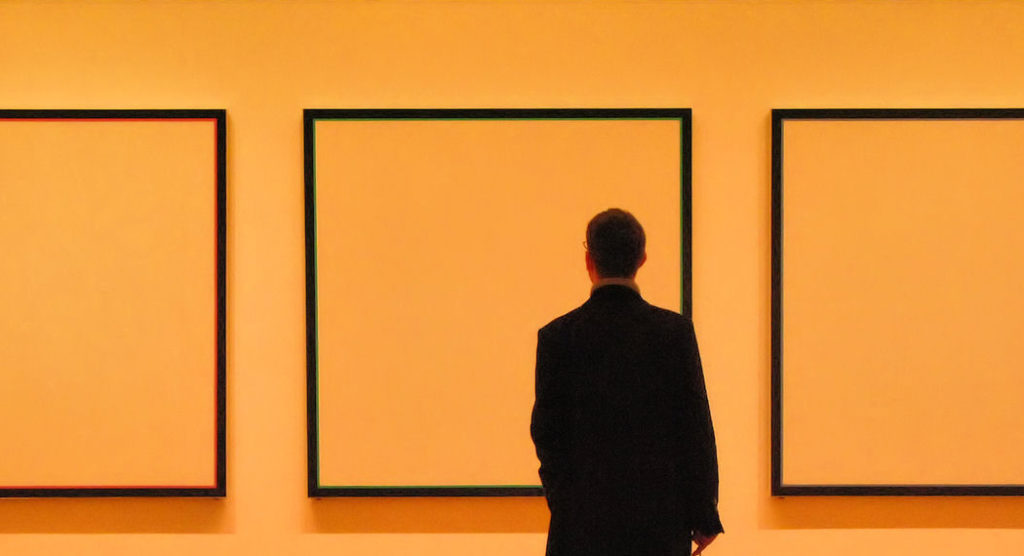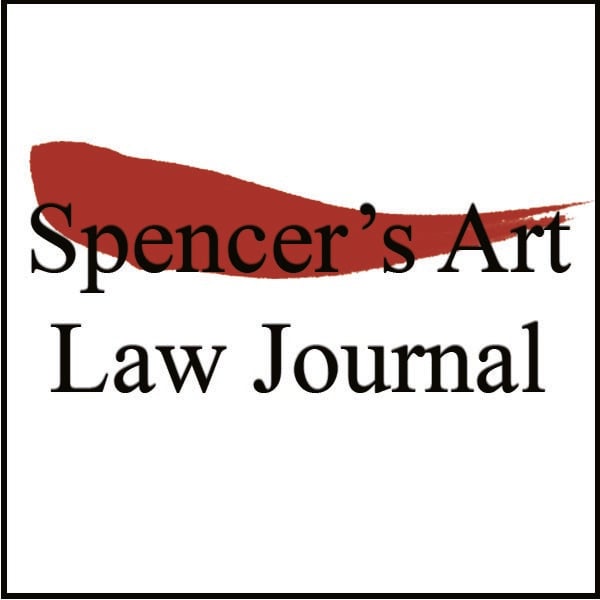Galleries
Art Law on Protecting Art Experts From Lawsuits Over Authenticity
Why are opinions in the art world such risky things to give?

Why are opinions in the art world such risky things to give?

Judith Wallace


This short essay is by way of a simplified introduction to the use of insurance as protection for the art expert rendering opinions, both formal and informal, on the authenticity of visual art. The nature and availability of the kind of insurance is well worth the expert’s examination—and the world of art scholarship would be better off for it. (And, by the way, don’t forget about “no-sue” agreements.)
● ● ●
We regularly hear that experts (scholars, estates, executors, galleries, foundations, and their consultants) are concerned about the legal risks associated with issuing opinions on the authenticity of art, and are reluctant to state their opinions on the record. The most pernicious side effect of the fear of litigation is the increased likelihood that some experts will speak only off the record or in coded comments to the effect that they “like” or “don’t like” a picture—a situation that is rife with potential for ambiguity and misunderstanding.
One longstanding and cost-effective option has been for experts to require owners of artwork to sign an agreement not to sue on account of the expert’s opinion (a “no-sue agreement”), recognizing that the expert’s opinion is not a warranty of authenticity, is subject to change if new information comes to light, must be disclosed by the owner to purchasers, and may be publicly disseminated by the expert. Such agreements have been recognized by the courts as enforceable, and a lawsuit by the art owner would be a breach of the no-sue agreement, with the expert having a right to damages for breach of contract (the damages being chiefly the legal fees required to defend the lawsuit).1
Nevertheless, such agreements, while very important, are not a complete solution. Some experts fail to uniformly require agreements, and informally offer opinions to dealers and auction houses. Estates and heirs that are protective of the artist’s legacy sometimes police the market against fakes—meaning, effectively, that there is no counter-party to sign a no sue agreement with the expert. Experts actively seeking works for a catalogue raisonné may feel the need to attract submissions and publish a comprehensive catalogue trumps their liability concerns. Hence they do not insist on a no-sue agreement. And some disappointed owners are not deterred by the risk of attorneys’ fees for violating the terms of the no-sue agreement.2
In recent years, insurers have been marketing professional liability insurance for art experts to manage the risk of issuing opinions about the authenticity of art. One significant benefit of such policies is that they offer coverage for attorneys’ fees, since a dispute with the owner, entailing legal fees, is far more likely than a court-ordered damage award, and can be a significant burden on an independent scholar without institutional resources.
Challenges of the Underwriting Process
The main challenge to insurance coverage has been the difficulty in tailoring art authentication activities to the criteria that insurers traditionally use to evaluate risk in their errors and omissions policies.
The process of obtaining approval and a price quote is quite involved as each policy is tailored to a detailed review of the expert’s activities, including the artists in which the expert specializes, the number of opinions rendered per year, the value of the artwork, and the procedures of the expert. This review may be helpful to experts who are not affiliated with an institution, do not have legal counsel to review their contracts and procedures, and may welcome the suggestions for their procedures.
Another reason the underwriting process is time consuming is that it requires experts to thoroughly describe their activities in advance (a “protocol”), and to be prepared to stay within the scope of those activities as a condition of coverage. Insurers look more favorably on experts that set forth a basis for their opinions. Fortunately, insurers seem to be satisfied with general descriptions of procedures rather than a listing of specific technical or aesthetic criteria used to evaluate artwork.
Nevertheless, insurers do not always have an accurate grasp on what factors are actual indicators of risk. For example, insurers offer this coverage through their miscellaneous professional liability coverage, and define “professional” services as work performed for a fee. It can be difficult to overcome this fee requirement, though, curiously, it does not seem to matter whether the fee is $10 or $500. Some foundations rightly view their opinions as a public service, and since experts in the United States generally charge a nominal flat fee, not a fee pegged to the value of the artwork at issue, the amount of the fee charged per opinion is not a significant source of income and does not necessarily reflect liability risk. Some experts charge a fee only to avoid being bombarded with frivolous requests. If formality is the goal, a contractual agreement should be sufficient, especially since insurers generally require written agreements between owner and expert.
Insurers do generally insist that experts view an artwork in person, and not rely on images alone. Some experts are very confident that they can identify a fake based on an image, though they may need to view a work in person to feel confident that it is authentic. Insurers prefer an expert to prepare a list of the reasons underlying a decision, either for the opinion letter or possibly for a memorandum to file. Insurers are unhappy when experts physically label works as fake.
In other ways, insurance carriers are surprisingly tolerant. Interestingly, despite their attachment to a technical definition of professional services, they do not require that the expert perform the services on behalf of a corporation or institution—they will cover college or university-affiliated academics that provide opinions outside the scope of their duties to their institutions. Insurers also seem willing to issue coverage for opinions even though the insured is “interested” in the transaction, such as dealer opinions for works they are selling, and estate opinions on art that they own. Since the expert who owns and sells artwork would be the target of a warranty claim, insurance may be a particularly good investment if this is part of the expert’s activities.
Coverage might not be available for the very common occurrence of an auction house or gallery contacting an expert for an informal opinion, without a no-sue agreement from the owner, sometimes based on an emailed image. Nevertheless, some experts may feel it is worthwhile to preserve their province as the leading authority on a particular artist, or may be more concerned about problematic works being offered for sale than they are about their own litigation risk.
Covering the Cost
Experts will be concerned about the cost of insurance. However, it is generally acknowledged that fear of litigation is deterring some experts from issuing formal opinions at all. A fee that covers the cost of the insurance, making it possible for experts to feel comfortable issuing opinions, should be viewed as an acceptable, and ethical, practice. The College Art Association guidelines3 should formally acknowledge that this is permissible. The annual policy amount for individual experts is fairly modest and could be recouped by fees for five to 10 opinions. (Policy premiums for catalogues raisonné, in contrast, can easily run into five figures, and need to be maintained for the period in which claims are likely to be made.) Informal, ambiguous opinions that are susceptible to misinterpretation may be riskier and more costly in the end.
Summary and Trends
In sum, insurance carriers strongly disfavor ad-hoc processes, both in determining whether to issue coverage at all and in setting the premium amount. It will cover experts that informally provide opinions, or provide opinions that were not solicited by the owner, only if that activity is expressly approved in advance. Insurance companies generally require, as a condition of coverage, that insureds undertake procedural safeguards to manage risk, including formal, written agreements and written procedures. Accordingly, insurance is not a substitute for standardized, formal procedures, and agreements with collectors submitting art for authentication, such as those recommended by the CAA guidelines, but a supplement to such programs.
Furthermore, after a period in which insurers seemed to be rushing to invest excess insurance capacity in this area, we now understand that insurers may be backing away from issuing new coverage, making it more difficult to obtain comparative quotes. This may be a trend that can be reversed by discussions with insurers to more accurately identify their risk.
There have also been efforts to develop coverage limited to attorneys’ fees defending a claim against the expert, and not covering the underlying liability for authenticity opinions. Such limited coverage is already available for dealers on claims relating to title. By tailoring the retention amount (i.e., deductible) and limiting the coverage to legal fees, which are arguably more predictable than art values, insurers may be able to offer policies at lower premiums, increasing the number of applicant experts, and increasing insurers’ understanding of this area.
Judith Wallace is a member of the Art Law Group at Carter Ledyard & Milburn LLP. She represents collectors, foundations, artists, and scholars in matters of art ownership, authenticity, authorship, consignment and sales, foundation governance, and other art-related matters. She writes frequently on art law issues.
Notes
1 Lariviere v. Thaw, Index No. 100627/99, 2000 N.Y. Misc. LEXIS 648 (Sup. Ct. N.Y. County June 26, 2000) (Ronald D. Spencer represented the Pollock-Krasner Foundation in Thaw).
2 Simon-Whelan v. The Andy Warhol Foundation for the Visual Arts et al., No. 07 Civ. 6423, 2009 WL 1457177 (S.D.N.Y. May 26, 2009) (Swain, J.). (The authors were among the attorneys representing the Warhol Foundation and Warhol Authentication Board in that case.)
3 College Art Association, Standards and Guidelines, Authentications and Attributions, adopted Oct. 25, 2009, available at http://www.collegeart.org/guidelines/authentications. (Ronald D. Spencer was part of the task force that submitted these guidelines.)
4 Giving of opinions that were unsolicited by the art owner is an activity that would need to be discussed with the carrier.
Editor’s Note
This is Volume 5, Issue No. 2 of Spencer’s Art Law Journal. This winter issue contains three essays, which will be available on artnet in March 2015.
The first essay (Mistakes Were Made) discusses the often-made claim of mutual mistake by both seller and buyer about the authenticity of art sold, and whether the sale can be rescinded by the disappointed buyer.
The second essay (It’s Becoming Easier to Get Your Consigned Art Back from the Bankrupt Gallery) examines consigning art to a gallery. One of the risks is the bankruptcy of the gallery (think Salander-O’Reilly). Getting your art back from the bankruptcy trustee may be getting easier.
The third essay (Legal Liability of Art Experts—Is Insurance a Solution and Will Opinions Be Less Dangerous Things to Give?) is an introduction to the use of insurance as protection for the art expert. This kind of protection should encourage opinions from experts.
Three times a year, this journal addresses legal issues of practical significance for institutions, collectors, scholars, dealers, and the general art-minded public.
— RDS